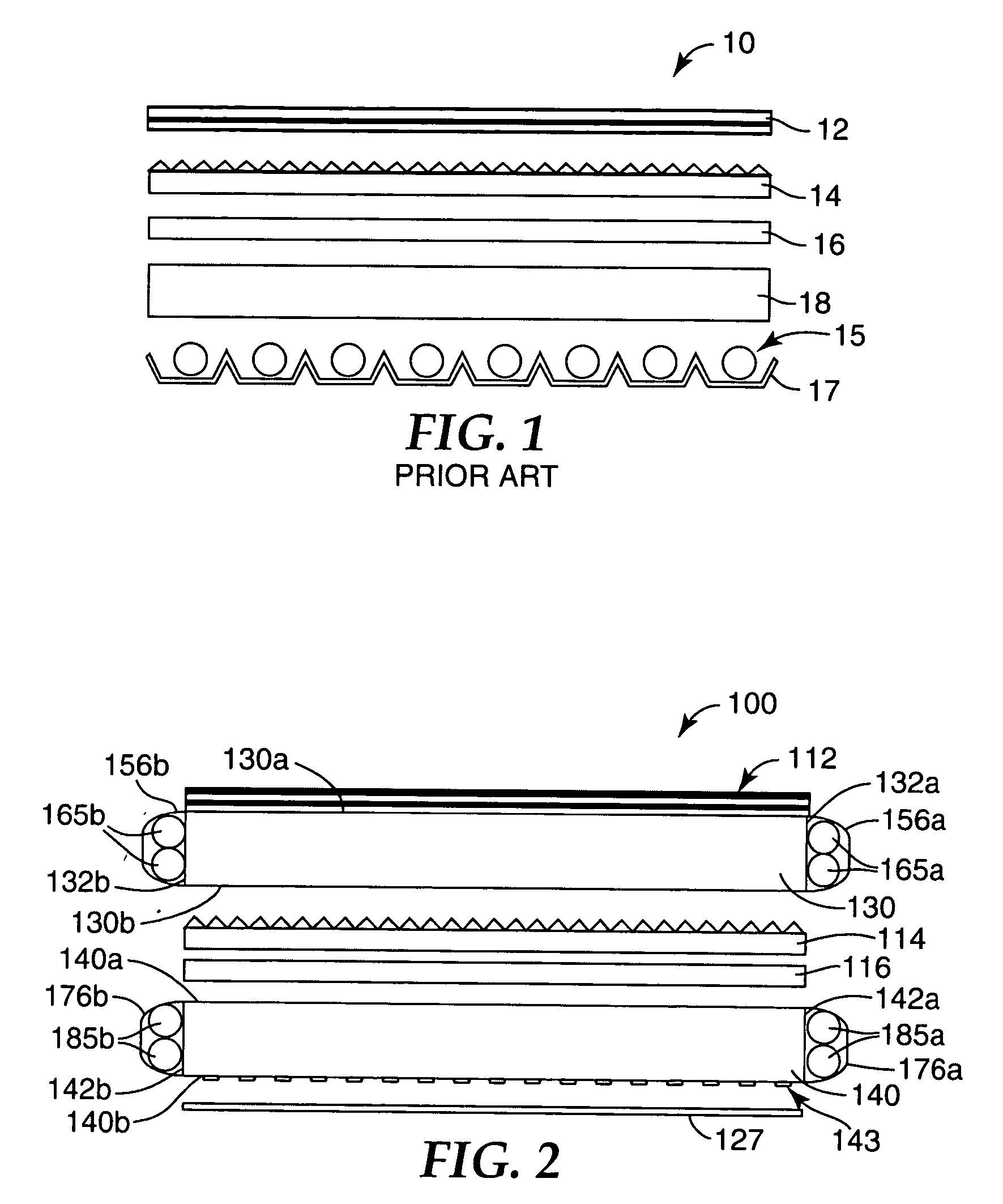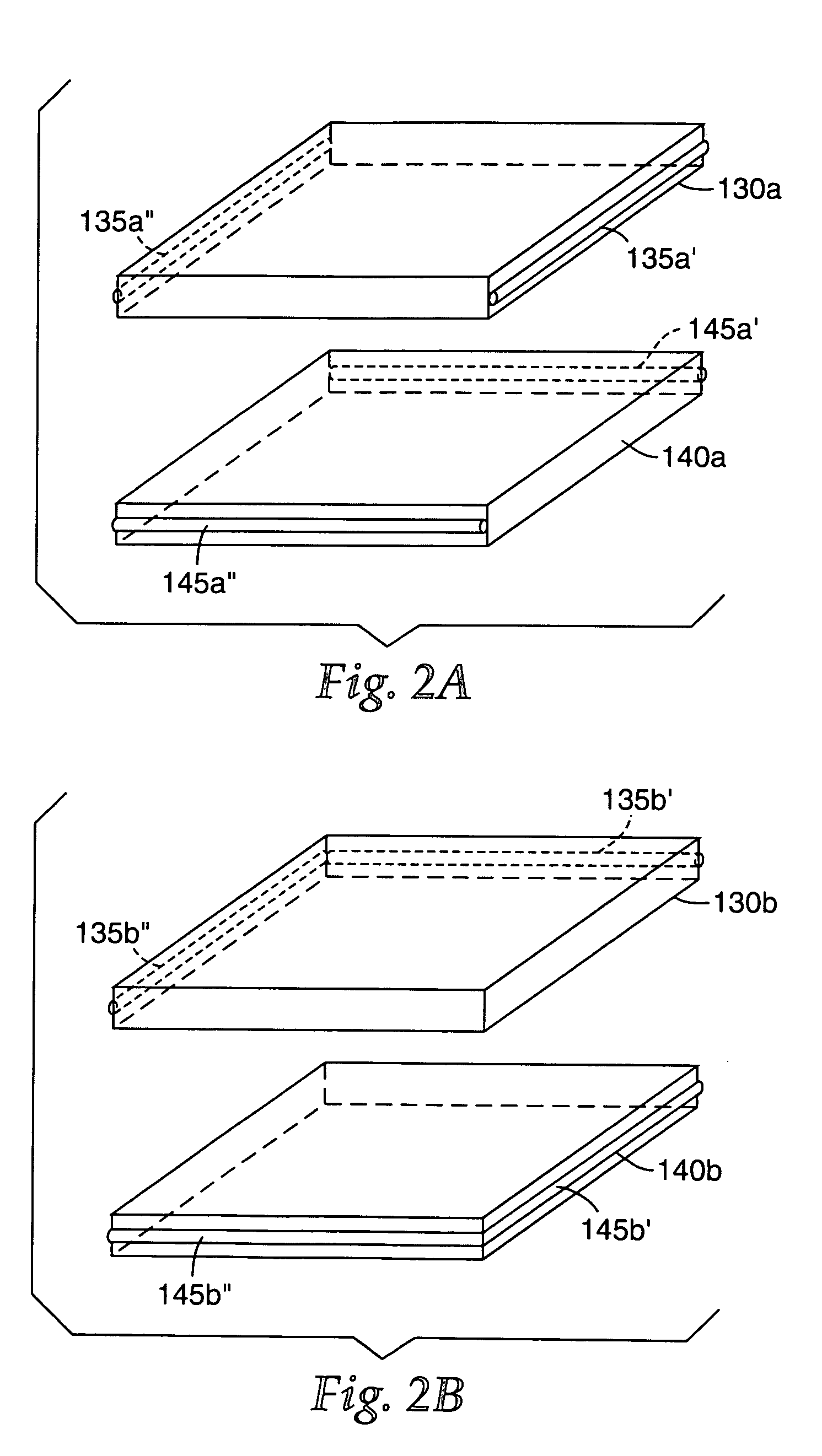Multiple lightguide backlight
a backlight and lightguide technology, applied in the field of backlighting systems, can solve the problems of lcd manufacturers and television set makers currently not having a model for servicing lcd backlights, affecting readability, and reducing the service life of lcd backlights, so as to improve the service life and reduce the risk. , the effect of enhancing the light mixing
- Summary
- Abstract
- Description
- Claims
- Application Information
AI Technical Summary
Benefits of technology
Problems solved by technology
Method used
Image
Examples
Embodiment Construction
[0034]FIG. 1 illustrates the structure and components of a traditional direct-lit backlight 10, such as those presently used in LCD televisions. The traditional backlight 10 includes an array of light bulbs 15, typically CCFLs, and a shaped reflector 17 located behind the array of light bulbs 15 for directing more light toward a viewer. A thick diffuse plate 18 is usually placed over the array of light bulbs 15 to diffuse light from the individual bulbs, e.g., CCFLs, in order to hide them from the viewer. A typical diffuser plate 18 has a large amount of absorption associated with it, as well as a large amount of back scattering, the effects of which grow exponentially if light-recycling enhancement films (described below) are added to the backlight. To further aid in hiding individual light bulbs from the viewer, diffuser plates have been patterned, which resulted in additional losses of light.
[0035] The traditional backlight 10 further includes a thin diffuser sheet 16 and a laye...
PUM
| Property | Measurement | Unit |
|---|---|---|
| structure | aaaaa | aaaaa |
| thickness | aaaaa | aaaaa |
| luminance | aaaaa | aaaaa |
Abstract
Description
Claims
Application Information
 Login to View More
Login to View More - R&D
- Intellectual Property
- Life Sciences
- Materials
- Tech Scout
- Unparalleled Data Quality
- Higher Quality Content
- 60% Fewer Hallucinations
Browse by: Latest US Patents, China's latest patents, Technical Efficacy Thesaurus, Application Domain, Technology Topic, Popular Technical Reports.
© 2025 PatSnap. All rights reserved.Legal|Privacy policy|Modern Slavery Act Transparency Statement|Sitemap|About US| Contact US: help@patsnap.com



